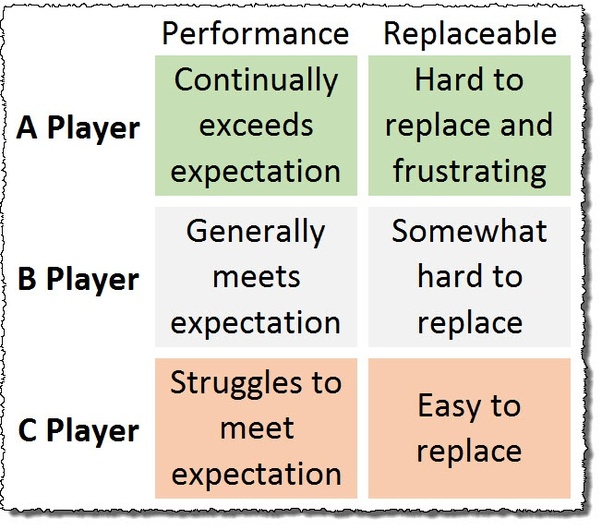What is an A-Player and Are They Overrated?
Remember the Chicago Bulls of the 1990s? Michael Jordan was the ultimate A Player.
What about Pippen, Grant, Paxton, or Kerr? Were they A Players or B Players?
In sports, we can easily pin the labels on the players we follow. How about in business? Perhaps some definitions are in order.
Performance and Replaceability
Ask 5 CEOs on the definition of an A Player and you’ll probably get 6 different answers. No, that’s not a typo.
However, I think some themes will surface. For instance, some staff members will always outperform others regardless of the task at hand without complaining.
I’m going to suggest that A-Players are team members with a strong goal orientation and a relentless drive to keep pushing forward till the objective is met. They are also likable experts who can work solo or thrive in a team environment.
I feel for the CEO and his/her HR Director when it’s time to replace these MVPs–it’s hard and takes a great deal of time to replace them. Don’t be surprised if it takes 2 people to replace that lost A Player.
Now let’s contrast the A Player with the C Player. The C Player is generally the opposite of the A Player. C Players are not goal-oriented, they lack drive, and they may not be the most enjoyable people to hang around at or away from the office. In terms of skills, they have hit a ceiling with no desire to push through it.

How About B-Players?
B Players are not necessarily a stepping stone from A status. Allow a B Player to continually hang out with C Players, and that B Player will start becoming like them.
B Players have not hit a ceiling and can be coachable to A status. B Players generally meet performance standards but not necessarily exceed goals set by leadership. Do we want our CEOs to lose B Players? Not at all, but they are replaceable.
The B-Player Challenge
If you are a new CFO in the consulting business, want some great advice on talent acquisition?
Forget A Players. Since we’re generally serving businesses under $25 million in revenue, good luck in finding A Players throughout your client base. There might be a few, but that will be it.
That means we need to be teaching and showing our clients how to:
- Clearly, differentiate B Players from C Players, and
- Teach our clients how to mentor and coach those B Players as close to A status as possible
Even the best business schools in the U.S. are not teaching business leaders how to coach and mentor others. That’s a skillset lacking in the CEO ranks that you and I serve. Accordingly, we have an opportunity to help our clients improve business performance by showing them how to find, get, and grow their B Players.
A Simple Homework Assignment
Consider showing your client the grid below. Have them count the number of A, B, and C Players they have based on the descriptions I have provided.
The work is not done yet. Are they okay with the results? Have the CEO now enter what the numbers should be. Then get to work to make that happen.







